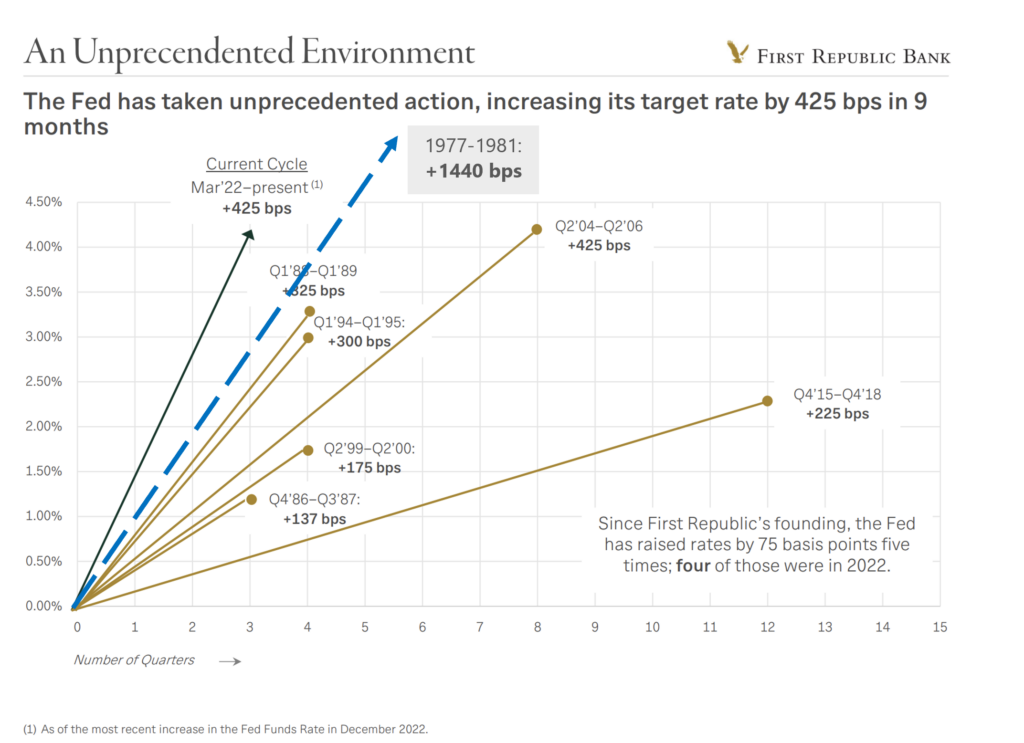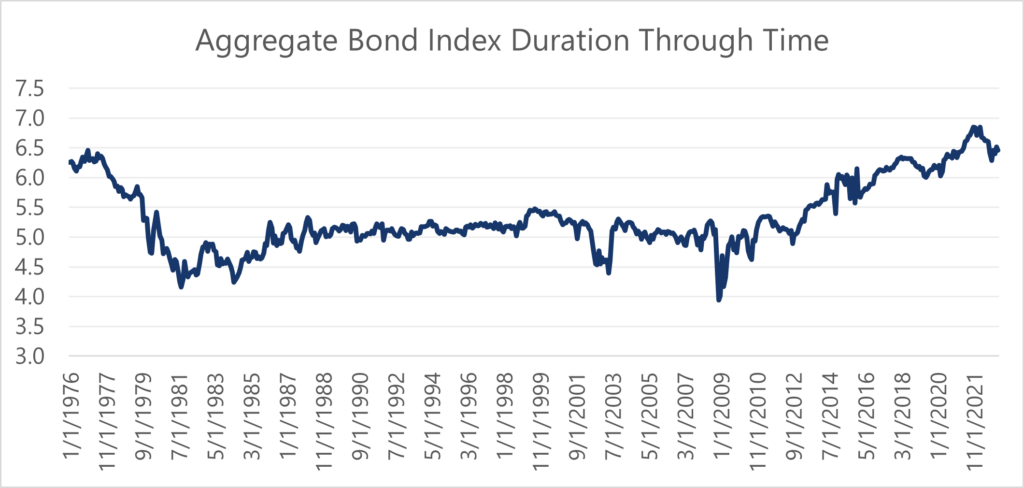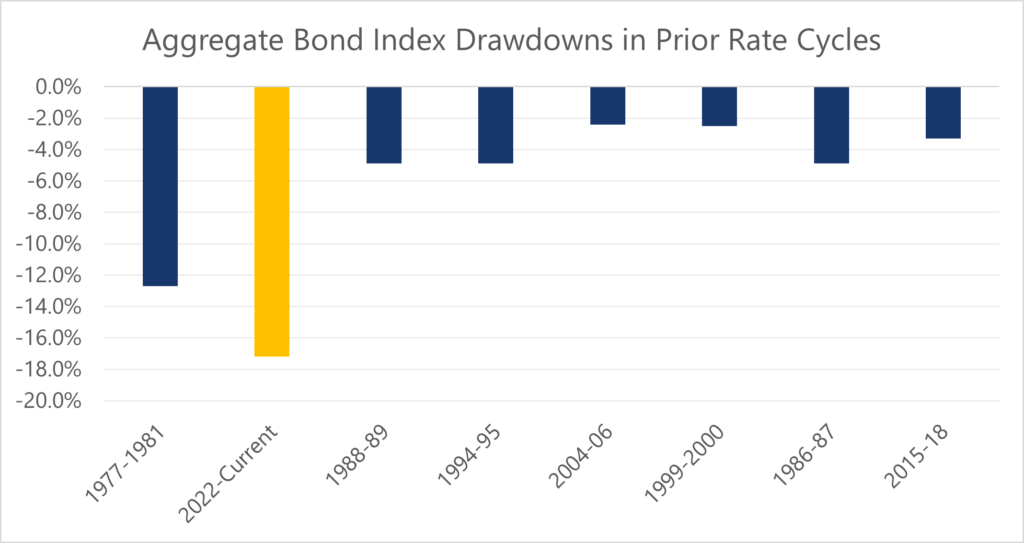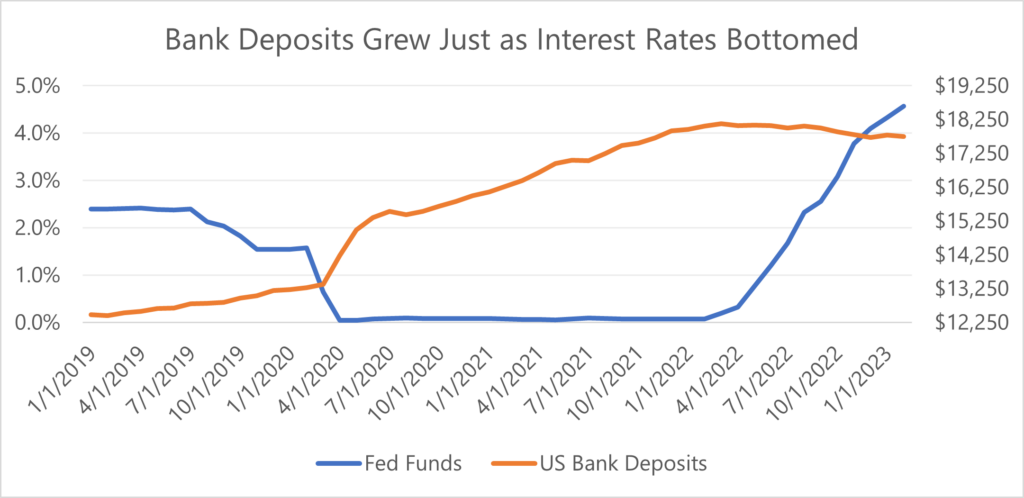In the wake of the March 10th demise of Silicon Valley Bank, banks have been thrust into the center of the latest economic crises. More specifically, banks with a large number of uninsured deposits (those over $250k) have been prone to massive bank runs. The impact of rapid interest rate hikes has hampered the ability of banks to easily meet outflows, thus reinforcing depositors’ concerns and creating the conditions for bank runs.
The chart below is pulled directly from First Republic Bank’s December investor presentation, and it more or less foretells their own demise (the bank’s stock is down over 90% since).[1] While First Republic’s outcome was far more severe due to their especially high number of uninsured deposits, nearly all banks share this risk.

Source: First Republic Bank Form 8-K, page 33. Date of report (Date of earliest event reported): January 13, 2023. Data for 1977-1981 from Fred database on the Federal Funds rate.
Even if one adds the most infamous rate-hiking cycle of the modern era to the chart, the current period looks anomalous because of its sheer speed.
Given the record low base of yields across fixed income, the values of bonds were especially sensitive to interest rates. The Bloomberg Aggregate Bond Index’s duration, or the estimate of its interest rate sensitivity, was sitting at over a 40-year high before the recent hikes.

Source: Bloomberg, Beaumont Capital Management (BCM). The chart shows the modified duration of the Bloomberg Aggregate Bond Index for the period 1/1/1976 through 3/1/2023.
The combination of these factors resulted in banks taking deposits and purchasing risk-free treasuries which are almost unanimously under water.

Source: Bloomberg, Beaumont Capital Management (BCM). The chart shows the total return of the Bloomberg Aggregate Bond Index during each rate cycle during the period 1/1/1976 through 3/1/2023.
Further complicating matters for banks was the fact that consumers and businesses happened to be flush with cash after a particularly simulative period just as interest rates were making their lows.

Source: FRED. Data for the period 1/1/2019 through 3/1/2023. The left axis represents the Fed Funds rate. The right axis represents bank deposits.
Therefore, banks bought A LOT of these now underwater securities. Even the largest banks in the world would have staggering losses if forced to meet a rush of deposits[2]. While the sudden fear of depositors was the spark for the current crises, the sheer speed of interest rate hikes was the kindling.
While the government and FDIC have taken drastic measures to stabilize the banking system, it remains to be seen if there are economic impacts outside of the banking sector given the implications for the overall availability of credit within the economy. At minimum it seems clear that a more restrictive banking sector is additive to the Fed’s goal of restrictive economic policy.
[1] Price data from Bloomberg as of 12/31/2022 and 3/31/2023.
[2] As of 12/31/2022 Bank of America had unrealized losses of $113.5B on its “Held to maturity” assets. This was equivalent to nearly 50% of the banks capital.






